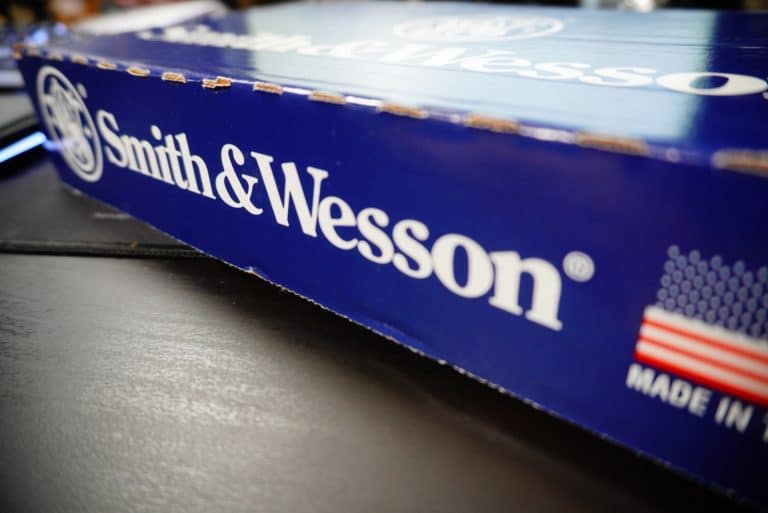The nation’s largest gun maker posted a sales increase for the second quarter in a row.
On Friday, Smith & Wesson released its second-quarter earnings report. It showed net sales at $125 million, a nearly $4 million jump over the same quarter last year. That represents a 3.2 percent increase and puts the company ahead of the trend in checks run through the FBI’s National Instant Criminal Background Check System (NICS).
“Top line revenue and unit shipments were both up versus last year, while channel inventories actually decreased slightly in the period,” Mark Smith, Smith & Wesson CEO, said in a statement. “This robust sell through, combined with our shipments outperforming NICS in the quarter by over 7%, underscores our belief that our strong performance was due to share gains at the retail counter.”
The growth comes on the heels of Smith & Wesson posting a year-over-year gain in its first quarter. Before that, the company had seen a continual slide in sales from peaks reached in 2020 and 2021. Those declines ran alongside a years-long drop in NICS checks, which provide a gauge for overall gun sales. The upswing also mirrors a rebound in the overall market, as seen in the last two months of NICS check reports from the FBI.
The National Shooting Sports Foundation (NSSF), an industry trade group that publishes sales reports based on the FBI data, said the uptick in recent sales is evidence of “vibrant demand for lawful firearm ownership.” The group said the hunting and Christmas seasons are driving sales as 2023 comes to a close. But it also argued the political environment heading into the 2024 presidential election is driving Americans to buy more guns as well.
“There are many communities with sustained levels of crime that have not abated,” Mark Oliva, an NSSF spokesperson, said earlier this month. “Those concerns, along with the punishing antigun measures by the Biden administration and threats of more gun control promised by the Biden-Harris reelection campaign, cannot be discounted as contributing factors.”
Ruger, the other publicly-traded American gun maker, has not faired as well in recent months. It posted net sales of $120.9 million in its most recent quarter, which ended in September. That’s down $18.5 million, or 13 percent, year-over-year. Ruger CEO Christopher J. Killoy said the company’s decline in revenue and profitability was due to an overall decline in demand for guns, which created “a challenging, promotion-rich marketplace.”
Smith & Wesson has been able to navigate that challenge a bit better. While sales increases have been modest, they have also been consistent over the past six months. During that period, net sales hit nearly $240 million. That’s a 14 percent increase over the same period in 2022. However, the company also saw its cost of sales climb more than 23 percent, which cut its gross profits by 12 percent.
The company blamed inflation and construction costs at its latest factory in Tennessee for cutting into profits. But said it expects those factors to be less severe in the coming months.
“Although our gross margin continues to be temporarily pressured by fixed-cost absorption, inflationary factors, and inventory reserve adjustments,” Deana McPherson, the company’s Chief Financial Officer, said in the report. “we strengthened our working capital position by reducing production to drive internal inventory levels down and we anticipate that the temporary margin headwinds will abate in the fourth quarter.”
Smith & Wesson said it expects to keep growing as we finish 2023 and head into 2024.
“With demand levels expected to remain elevated through our traditionally busy season, a strong balance sheet, and a significant reduction in capex on the horizon as we wind down the major investment in our new facility in Tennessee, we expect to be in a very strong position to drive returns for our stockholders,” CEO Smith said.
The company has scheduled a dividend payment of $0.12 per share for the end of the year.






